- Home
- Diane Ackerman
The Human Age: The World Shaped by Us Page 15
The Human Age: The World Shaped by Us Read online
Page 15
Animals have died in the millions helping us fight our wars, and as our soldiers have become increasingly more technological in recent decades, so have our armed service animals. In 2010, the Chinese newspaper People’s Daily accused the Taliban of training monkeys to shoot Kalashnikovs, light machine guns, and fire mortars at NATO forces. Though the Taliban denied the rumor, it leaves disturbing images in the mind, and conjures up the scene in The Wizard of Oz when a battalion of flying monkeys attacks from the skies. Even watching the movie as a kid, I was scared not by the monkeys but by the witch evil enough to train animals as goons to wage our wars.
The CIA has experimented with remote-controlled cyber-insects, inserting microchips into the pupa stage of butterflies, moths, and dragonflies because, as a DARPA proposal explained, “through each metamorphic stage, the insect body goes through a renewal process that can heal wounds and reposition internal organs around foreign objects.” The result: cyborg dragonflies and robomoths, and search-and-rescue cyborg cockroaches. Other plans have included remote-controlled sharks (with electrodes in their brains) designed to sniff out bombs and explosives, bees trained to replace bomb-sniffing dogs, and hamsters stationed at security checkpoints who are trained to press a lever when they smell high levels of adrenaline.
For more than fifty years, the U.S. Navy has trained pods of dolphins to use their elite echolocation skills and low-light vision to spot and clear underwater mines. They’ve served the navy in both Vietnam and the Persian Gulf, by filming, delivering equipment, and capturing enemy divers (by clamping on a leg cuff roped to a buoy). Mine-hunting dolphins learned to identify underwater explosives without detonating them and report back to their handlers, giving yes or no responses to questions. Sometimes they marked the whereabouts of mines by delicately attaching buoy lines to them; other times they disabled the mines by attaching explosives and dashing away. When Iran threatened to mine the Strait of Hormuz in 2012, and block the vital shipping route, NPR asked retired admiral Tim Keating, who commanded the U.S. Fifth Fleet in Bahrain, how he’d handle the situation.
“We’ve got dolphins,” he said matter-of-factly.
Prized as the dolphins may be by their handlers, the navy regards them as another form of personnel, without rank but classified in true military fashion. For instance, “Mk 4 Mod 0” is a dolphin trained to detect a mine near the seabed and then attach an explosive charge to it; “Mk 5 Mod 1” is a sea lion used to retrieve mines during practice maneuvers.
However, in the summer of 2012 the navy made a momentous announcement. It plans to retire its squads of minesweeping dolphins and other sea mammals by 2017, and replace some with robotic drones called “knife fish” (a fish known for emitting an electric field). Unlike sea mammals, knife fish won’t be able to neutralize a mine, only locate, film, and transmit data about it. Other pods of robotic underwater drones will be guided by fiber-optic cables. I’d like to believe that compassionate motives inspired this decision, but I’m sure thrift also played a role. As a military system, robots are cheaper to field than dolphins, who are heavy to transport to battle theaters in water-filled tanks, and require feeding and medical care.
There’s been a lot of public complaint about sending animals to war and research labs, especially big-brained mammals like dolphins, and maybe it hasn’t fallen on entirely muffled ears. In 2013, after years of concerted worldwide lobbying, the U.S. government finally retired nearly all research chimpanzees and listed the species as endangered. This means that the chimpanzees who have weathered countless illnesses on our behalf are finally being released to animal sanctuaries, and no new chimps will have to face such horrors.
Our dominion over animals, ill-treated for eons in our research and wars, is rapidly being replaced by technology, thank heavens. We have pack mule robots designed to supplant horses and trucks in difficult terrain, robot fleas that leap through open windows and spy, and ambidextrous gymnastic robots that can fill in for human soldiers in toxic areas. But no one has figured out yet how to engineer a dog’s superrefined nose. Dogs can smell a man’s scent in a room he has left hours before, and then track the few molecules that seep through the soles of his shoes and land on the ground when he walks, over uneven terrain, even on a stormy night. Thus far a robot can’t match that finesse. So for the time being we still have dog-soldiers, some trained to kill.
If wars must be fought at all, drones at least are heartless. Alas, their targets aren’t.
PADDLING IN THE GENE POOL
For thousands of years, we’ve left a trail of our preferred traits in the planet’s life forms, in food crops and animals, to be sure, but also in our favorite pets. No other animal is as defined by the long history of its codependency with humans as the dog, so much like us in its capacity for affection and savagery. All dogs trace their ancestry to one canine—the wolf—but you’d never know it looking at Chihuahuas, Bedlington terriers, Belgian griffons, cocker spaniels, Great Danes, boxers, Basenjis, Afghan hounds, or corgis. Over the centuries, we’ve bred dogs for all sorts of jobs and sports: long dachshunds to squirm down badger holes, balloon-chested greyhounds and whippets to race, Entlebucher Mountain Dogs to herd sheep. Lapdogs abound in a fantasia of shapes and colors. Or one can choose a companion dog by intelligence, disposition, or possibly endearing neuroses (tail-chasing, for example). Our feats of selective breeding produce trendy, aesthetically pleasing dogs, including many so inbred that they suffer from about 350 known hereditary diseases, including beagles with weak spinal discs, Dobermans given to narcolepsy, basset hounds with blood-clotting woes, flat-faced Pekingese bedeviled by breathing problems, and Scottish terriers eighteen times more likely to develop bladder cancer. We design dogs so small that they tend to dislocate their kneecaps, and dogs so large they have trouble with their hips.
But, however misbegotten the result of retooling our fellow creatures by controlled breeding, it is an experiment we’ve been carrying on for so long that we no longer even recognize the results as “unnatural.” Now that we have the technology to reach a steely hand into the machinery of cells and remodel the genes, even human ones, our powers are more disturbing, raising all kinds of ethical and legal challenges.
In 2012, John Gurdon and Shinya Yamanaka shared the Nobel Prize for the breakthrough discovery of how to persuade adult skin cells to regress into jack-of-all-trades (“pluripotent”) stem cells capable of morphing into any type of cell in the body—heart, brain, liver, pancreas, egg. It’s as if Gurdon and Yamanaka had found a way to reset the body’s clock to early development, enabling it to mint wild-card cells that haven’t chosen their career yet—without using the fetal stem cells that cause so much controversy.
Space may be only one of the final frontiers. The other is surely the universe of human imagination and creative prowess in genetics. “We are as gods and might as well get good at it,” Stewart Brand began his 1968 classic, The Whole Earth Catalog, which helped to inspire the back-to-the-land movement. His 2009 book, Whole Earth Discipline, begins more worriedly: “We are as gods and have to get good at it.”
Among the rarest of the rare, only several northern white rhinoceroses still exist in all the world. But, thanks to Gurdon and Yamanaka, geneticists can take DNA from the skin of a recently dead animal—say, a northern white rhino from forty years ago—turn it into “induced pluripotent stem cells” (IPS), add a dose of certain human genes, and conjure up white rhino sperm. Then, using in vitro, they hope to fertilize eggs from a living female white rhino, producing offspring to add genetic diversity and rescue the species. Thus far, they’ve successfully created embryos.
With vase-shaped dark faces haloed in soft silver fur, as if even their foreheads were bearded or their auras were permanently visible, silver-maned drill monkeys are the most endangered African primates, swinging through tiny swatches of jungle in West Africa. The few survivors are riddled with diabetes. As a joint project, the San Diego Zoo and the scientists at the Scripps Research Institute are hoping to find a cure fo
r the disease and also enrich the drills’ gene pool: they recently created IPS from the silver-maned drills and coaxed the stem cells to become brain cells.
The same brew of magicians at Scripps is hatching IPS therapies for humans, with the first long-awaited human clinical trials for Parkinson’s disease starting soon. That’s a far cry from dinosaurs grazing in Central Park. Not that dinosaurs are on the table; they’ve been extinct so long that their DNA is no longer viable. But lots of other animals, from passenger pigeons to great auks, are contenders. Curiosity is a natural torrent in humans, one it’s hard as a mudslide to resist. Hosts of people meet avidly at conferences and in research centers to discuss who, how, when, and why to de-extinct. Russia’s Pleistocene Park, where look-alikes of ancient cattle and horses already roam, awaits a shaggy herd of woolly mammoths, even if the grassy steppes they once grazed no longer exist. For some, de-extinction is a moral quest dusted in eco-guilt; for others, it’s a burning scientific challenge. A candid few openly admit that, for them, it’s just too cool an idea to pass up.
At Harvard, the molecular geneticist George Church has pioneered ways to ramble through orchards of DNA, cherry-picking individual genes to produce desired traits or remove harrowing ones. I’ve always found Tasmanian devils endearing, maybe because they’re raucously bad-tempered and quarrelsome to a laughable extreme, and stand up like hairy sumo wrestlers when they fight. Their wild population has been ravaged by contagious facial tumors, and about 80 percent of them have died. Church could pinpoint the gene that’s causing the tumors and erase it from the bloodline. He could recreate extinct passenger pigeons by cobbling together bits of their DNA, if he wished, writing a formula using DNA’s four bases: A, T, G, and C. Despite the futuristic science and lab settings, the vocabulary he and his cohorts use is mechanical and pure Industrial Age. To build a cell, a bioengineer consults a registry of parts, chooses the bio-bricks he wants, and goes through an assembly process: loading bricks of DNA onto a chassis (the E. coli bacterium, for example) in a foundry.
It’s astonishing that we’ve come far enough as a species to think, We’ve driven all these animals extinct . . . how can we restore them? We have a sense of deep nostalgia about the animals that surround us, and the possibility of de-extincting them. We used to think we had simple dominion over the animals. Today, as we watch plant and animal gene pools dwindling, and pluripotent stem-cell technology zooming, we know that our role is far more complex and that ingenious mistakes require even more ingenious responses.
AS THE EAST Midlands train glides from London toward Nottingham, we pass a show-stopping array of giant old horse chestnut trees with domed crowns and wide shady skirts. Covered in cone-shaped blossoms that sway like incense, they scent the air with a heavenly smell that’s fierce as lilac but more animal. Not barnyard horsey exactly, but leather-sweet and slightly sweaty. Soon the suburbs give way to brilliant yellow stripes: fields of flowering rapeseed whose oil once lubricated our heavy machinery and now enters our trucks as biodiesel and our gullets as canola oil. Around a bend, tall termite mounds sprout in the distance, but as we draw closer they become smoke-gushing volcanoes, and then finally loom as the seven cement chimneys of a coal power station. Clustered together, they’re a monument to the Industrial Age, and the tallest landmark (some say eyesore) for many miles. For two hours, we’ve been escorted by an endless tribe of metal stick men, each with three arms from which steel pinecones dangle, who stride across the land holding up wide skeins of power lines.
All this sparsely settled farmland is what we call the “countryside,” and it fills the eye with bucolic English grandeur, even though some of it is far from native (Canada geese), some has been genetically engineered (canola rapeseed), and much has been machined from lyrical spurts of steel. Even the horse chestnut trees, so synonymous with England, have Balkan ancestry and an industrial secret. During World Wars I and II, British children collected their seeds—the deliciously smooth conkers that we carry in our pockets and serenely rub, polishing them with body oil until they look like mahogany knobs—and donated them to the war effort, where they helped to brew cordite for explosives.
No clouds of starlings pepper the sky before turning on a knife-edge and circling round. The overuse of pesticides has silenced the wildlife they feed on, and now great flocks and swarms and slithers of animals have vanished. Ironically, as a result of crops blanketing 70 percent of the United Kingdom’s land, more biodiversity has begun haunting the cities. Friends tell me London is askitter with red foxes.
I’m struck by the uniform, yielding, furrowed richness of the miles. Single crops parade past the window, along with clans of cattle and sheep. The same monotony of genes rules much of the planet, as wild and varied habitats give way to more prosperous if homogenous big farms. In the United States alone, twenty thousand square miles of land are covered by corn—an area twice the size of Massachusetts. We’re dabbling in eugenics all the time, breeding ideal crops to replace less aesthetic or nutritious or more perishable varieties, leveling forests to graze cattle or erect shopping malls and condos, planting groves of a few familiar trees homeowners and industries prefer. In the process, there’s the gradual eradication of genes, without fanfare, sometimes even driven by good motives.
We’re at a dangerous age in our evolution as a species: clever, headstrong, impulsive, and far better at tampering with nature than understanding it. Who knows what vanishing life forms—and their DNA—we may one day regret losing? Pollen from this sameness of crops will show up in the fossil record as a curiosity of our age; examining it, Olivine will wonder why we wiped out a beneficial smorgasbord of plants in favor of a few genetically modified, fruitless varieties. Will she guess that most of these were bred in the fields of avarice (forcing farmers to keep buying a company’s seeds)?
We’re in the midst of the planet’s sixth great extinction, losing between seventeen thousand and one hundred thousand species a year. It’s hypothesized that what caused the first great extinction, 440 million years ago, was radiation from the collapse of a massive supernova. During the second extinction, 245 million years ago, a possible meteor strike combined with volcanic eruptions killed off so many ocean species that coral reefs vanished for 10 million years. About 210 million years ago, some catastrophic event wiped out more than half of all life forms. The extinction that ravaged the planet 65 million years ago polished off the dinosaurs, sent temperatures soaring by nearly 60°F, and pushed sea levels up more than nine hundred feet. Today’s extinction event, the first during our reign, could end up being the most catastrophic of all. Many scientists predict that, at the pace we’re going, about half of all the world’s plants and animals will vanish by 2100. But, for a change, we know the exact causes of the extinction, having created them ourselves—climate change, habitat loss, pollution, invasive species, big agriculture, acidifying the oceans, urbanization, a growing population demanding more natural resources—and we’re in a position to stop them, if we set our collective mind to it.
So, as species dematerialize around us, worldwide efforts are under way to collect and protect the DNA of as many as possible before it’s too late. Two brave doomsday efforts have been leading the way. One is the Svalbard Global Seed Vault, a remote and heavily guarded underground cavern tucked four hundred feet inside a sandstone mountain on the Norwegian island of Spitsbergen, in the secluded Svalbard archipelago, which lies about eight hundred miles from the North Pole—a James Bond destination safe from both man-made and natural disasters, even melting ice caps (it’s 430 feet above sea level), tectonic activity, or nuclear war.
In some climate scenarios, due to crop shrivel and shortage of fresh water, food becomes scarce. The vault’s mission is to preserve seed diversity, because one never knows what calamity might descend, which crops might fail, and what seeds—whether heirloom or genetically engineered—might offer a solution in the Anthropocene world. The key may be a relic from a bygone era. As Paula Bramel, assistant executive director of the
seed vault, explains: “The environment is changing to the point where farmers can no longer maintain the seeds of the varieties that they always used. And that’s really a loss to everybody because that variety may have a trait that’s really critical in the future.”
If those seeds aren’t cached now, they won’t sprout later. Bramel points out this is a particular problem in Africa. We’ve abandoned many heirloom crops because they’re not as cheap to grow in our technological Valhalla, or as blemish-free as we demand. Some are no longer as hardy in our changing climes. We may one day wish we still had them. The vault is the Norwegian government’s farsighted gift to the world; there’s no charge to countries for storing, cataloging, and overseeing millions of backup seeds, which, for the most part, sleep at -0.4°F, in refrigeration naturally provided by the permafrost. Every decade or so, some of the Sleeping Beauty seeds must be awakened and allowed to bloom so that fresh seeds can be collected. Of course, in the best possible future, if such a state of grace exists, they won’t be needed. In the meantime, as a fail-safe treasury, the vault houses millions of specimens of over four thousand different species.
The second doomsday effort lives on the campus of Nottingham University, in the Frozen Ark, which stores the DNA of 48,000 individuals from 5,438 different animal species. It’s Noah’s Ark moored in Robin Hood’s backyard, and its logo is a blue sketch of an ark sailing on a double helix of ocean waves.
FOR LOVE OF A SNAIL
Bryan loved snails, though not all snails equally. He was especially fascinated by one turban-shaped gastropod in the genus Partula. Among partulas, he had a thing for the species Partula mooreana. Just like Darwin’s finches, drifting colonies of partulas on tiny islands became cut off from their neighbors and rapidly diversified to a surprising degree in color, size, and shell motifs. Free of natural predators—except the Polynesians who strung ceremonial necklaces from their shells—the snails hoovered up algae on the undersides of caladium, plantain, dracaenas, turmeric, and other leaves in the understory of heavily forested volcanic slopes.

 A Natural History of Love
A Natural History of Love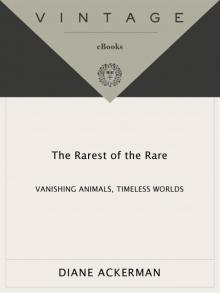 The Rarest of the Rare: Vanishing Animals, Timeless Worlds
The Rarest of the Rare: Vanishing Animals, Timeless Worlds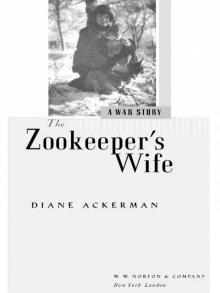 The Zookeeper's Wife: A War Story
The Zookeeper's Wife: A War Story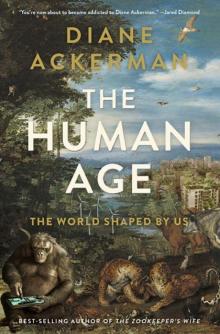 The Human Age: The World Shaped by Us
The Human Age: The World Shaped by Us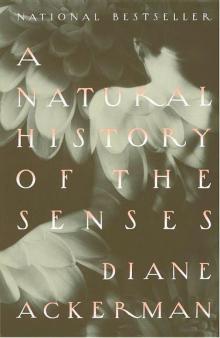 A Natural History of the Senses
A Natural History of the Senses One Hundred Names for Love: A Memoir
One Hundred Names for Love: A Memoir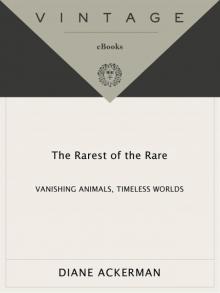 The Rarest of the Rare
The Rarest of the Rare